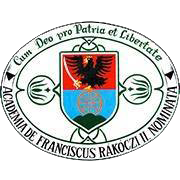Please use this identifier to cite or link to this item:
https://dspace.kmf.uz.ua/jspui/handle/123456789/2192Full metadata record
| DC Field | Value | Language |
|---|---|---|
| dc.contributor.author | Törzsök András | hu |
| dc.contributor.author | Gyuricza László | hu |
| dc.contributor.author | Дюриця Ласло | uk |
| dc.date.accessioned | 2023-03-01T11:55:24Z | - |
| dc.date.available | 2023-03-01T11:55:24Z | - |
| dc.date.issued | 2014 | - |
| dc.identifier.citation | In Limes: a II. Rákóczi Ferenc Kárpátaljai Magyar Főiskola tudományos évkönyve. 2014. I. évfolyam. pp. 133-145. | en |
| dc.identifier.isbn | 978-966-387-090-8 | - |
| dc.identifier.uri | http://dspace.kmf.uz.ua:8080/jspui/handle/123456789/2192 | - |
| dc.description | https://www.kmf.uz.ua/hun114/letoltes/limes/LIMES2014.pdf | en |
| dc.description | https://opac3.brff.monguz.hu:443/hu/record/-/record/bibBRF00000415 | en |
| dc.description.abstract | Abstract. Undoubtedly Lake Balaton in Hungary is Central Europe’s largest and most important lake from the point of view of tourism. The villages and small towns lying on the shore began to transform into functional tourist settlements in the last third of the 19th century, and from the second half of the 20th century Lake Balaton became a popular holiday resort of the German, Austrian, Czech, Danish, Dutch, English, Serbian, Polish and Russian tourists. Tourism has been developed not only by the local council and public bodies but also the local private initiatives which played an important role in it. In our work we would like to present the private initiatives helping to promote tourism in Keszthely at the end of the 19th century – the early 20th century and continuing this work to these days. | en |
| dc.description.abstract | Közép-Európa legnagyobb kiterjedésű és turisztikai szempontból is legfontosabb tava kétségkívül a magyarországi Balaton. A tó partján fekvő falvak, kisvárosok a XIX. század utolsó harmadától kezdtek átalakulni turisztikai funkciójú településekké, a XX. század második felétől pedig a Balaton a német, az osztrák, a cseh, a dán, a holland, az angol, a szerb, a lengyel és az orosz turisták kedvelt nyaralóhelyévé vált. A turizmus fellendítésén nem csupán a helyi magisztrátus, az állami szervek dolgoztak, hanem fontos szerephez jutottak a helyi magánkezdeményezések is. Munkánkban a keszthelyi turizmus fellendítését szolgáló a XIX. század végén – XX. század elején, illetve a napjainkban működő magánkezdeményezéseket kívánjuk bemutatni. | hu |
| dc.language.iso | en | en |
| dc.publisher | II. Rákóczi Ferenc Kárpátaljai Magyar Főiskola-V. Pagyak Kiadója | en |
| dc.relation.ispartofseries | A II. Rákóczi Ferenc Kárpátaljai Magyar Főiskola tudományos évkönyve;I. évfolyam | - |
| dc.rights | Attribution-NonCommercial-NoDerivs 3.0 United States | * |
| dc.rights.uri | http://creativecommons.org/licenses/by-nc-nd/3.0/us/ | * |
| dc.subject | tourism | en |
| dc.subject | tourism history | en |
| dc.subject | civil association | en |
| dc.subject | social history | en |
| dc.subject | Lake Balaton-cult | en |
| dc.title | Private Initiatives in the service of the animation of tourism in Keszthely, the capital of Lake Balaton | en |
| dc.type | dc.type.researchStudy | en |
| Appears in Collections: | Limes | |
Files in This Item:
| File | Description | Size | Format | |
|---|---|---|---|---|
| Torzsok_A_Gyuricza_L_Private_Initiatives_in_the_service_of_the_animation_of_tourism_2014.pdf | In Limes: a II. Rákóczi Ferenc Kárpátaljai Magyar Főiskola tudományos évkönyve. 2014. I. évfolyam. pp. 133-145. | 2.18 MB | Adobe PDF | View/Open |
This item is licensed under a Creative Commons License





